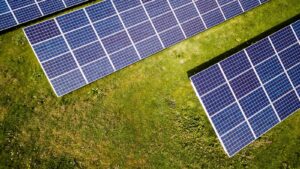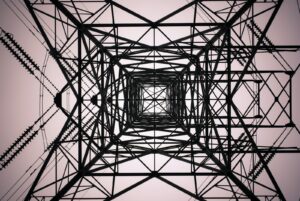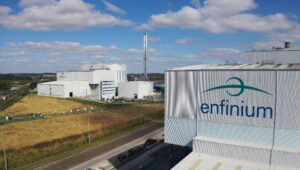Combining smart technology with renewables to tackle climate change
A new study has looked at how investment in community-level renewable projects can help to meet the future energy needs of towns and cities as temperatures rise
Meeting the increasing demand for energy and mitigating the effects of climate change are major challenges facing society.
By 2050, 70% of the world’s projected population of nine billion will live within urban areas, which are likely to face significant environmental challenges.
For example, higher temperatures will increase the energy demand for cooling (e.g. from air conditioning). Renewable energy technologies in the urban environment, such as solar and wind power, are increasingly regarded as an important solution to deal with climate change and energy security.
Certain cities have already made progress in integrating renewable energy. Rotterdam has adopted an energy approach plan called REAP, where renewable technologies are brought into urban planning.
Copenhagen aims to achieve 100% of its energy from renewables in order to become the first carbon-neutral capital by 2025.
A study by associate professor Denia Kolokotsa at the Technical University of Crete examined the potential role of renewable and zero-carbon technologies in meeting the growing energy demand for cooling. It included a review of the emerging and more established renewable-energy technologies and how they can, or have been, integrated into towns and cities.
Emerging technologies include a variety of wind turbine designs, which reduce the impact of erratic wind flow in built-up environments, and solar cells that are incorporated into pavements and floors, which are being piloted at the SolaRoad project in the Netherlands (pictured above).
The efficiency of urban energy supply can also be improved on a local scale with small combined heat and power (CHP) plants.
In Denmark, more than 50% of the country’s energy demand is met by CHP connected to district heating and cooling systems. CHP can also be used with renewable technologies such as solar power. Building owners have previously been discouraged from incorporating renewable technologies due to high costs and aesthetic and technical considerations.
Making the most of emerging technologies
However, the research suggests new technologies, such as micro-wind turbines, may be a more attractive prospect.
There has also been considerable research into integrating solar-cell technology into building design. For example, the development of dye-sensitised solar cells (DSCs) that can be incorporated into glazing facades. Replacement of the facades in an office building in Palermo, Sicily produces 112,000 kilowatt (kW) of electricity annually and has reduced energy consumption from air conditioning due to the extra shading provided.
Hybrid technologies can also have a significant role in increasing renewable use. Windrail technology can be installed on rooftops and produces electricity from both wind and solar energy.
These technologies demonstrate that renewables have the potential to cope with the potential increases in cooling demand in the urban environment, according to the study, but their wider use is hampered by two factors:
- most incentives for their installation are at the individual level, limiting community or district-level incentives, which might have a larger impact on total energy produced
- the high initial investment required limits those on lower incomes from installing renewable technologies
A smart approach
Information and computer technology and smart grids are suggested as a way to overcome these barriers. Smart grids — electricity supply networks that use digital technology to monitor and react to variations in usage — are described as a potential revolution in towns and cities to replace the centrally controlled grids of the 20th century.
Smart grids, smart meters and district-level energy-gathering data can allow better balancing of energy generation. This enables a better response to energy demand and can improve efficiency, reliability and interconnection of energy supply, and a reduction in energy costs.
For example, a study assessing the use of smart metering in hospitals indicated a 25–30% reduction in energy costs. Community-scale demonstrations, such as the LEAF Microgrid in Italy, show that all energy needs can be supplied from renewables (achieving a zero-energy goal) by combining renewable and energy-management technologies to balance supply and demand. Smart meters also help individual users to manage their own consumption.
At the Technical University of Crete, smart meters installed throughout the campus, combined with an awareness-raising campaign, led to a 17% reduction in energy consumption. The research suggests renewable energy use in the future can be part of a more sustainable way of living within urban communities.
Generating renewable energy at a neighbourhood or district scale means less infrastructure is needed to transfer energy to where it is needed. Kolokotsa argues incentives should be provided for joint public and private renewable-energy projects at community or district level, where the energy produced can be used by local residences.
- Source: Science for Environment Policy, July 13, 2017, Renewable-energy technologies can help meet the increased cooling demand in cities due to climate change. European Commission DG Environment News Alert Service, edited by SCU, The University of the West of England, Bristol. To access articles and to subscribe, please go to http://ec.europa.eu/science-environment-policy
Photo credit: SolaRoad Netherlands















